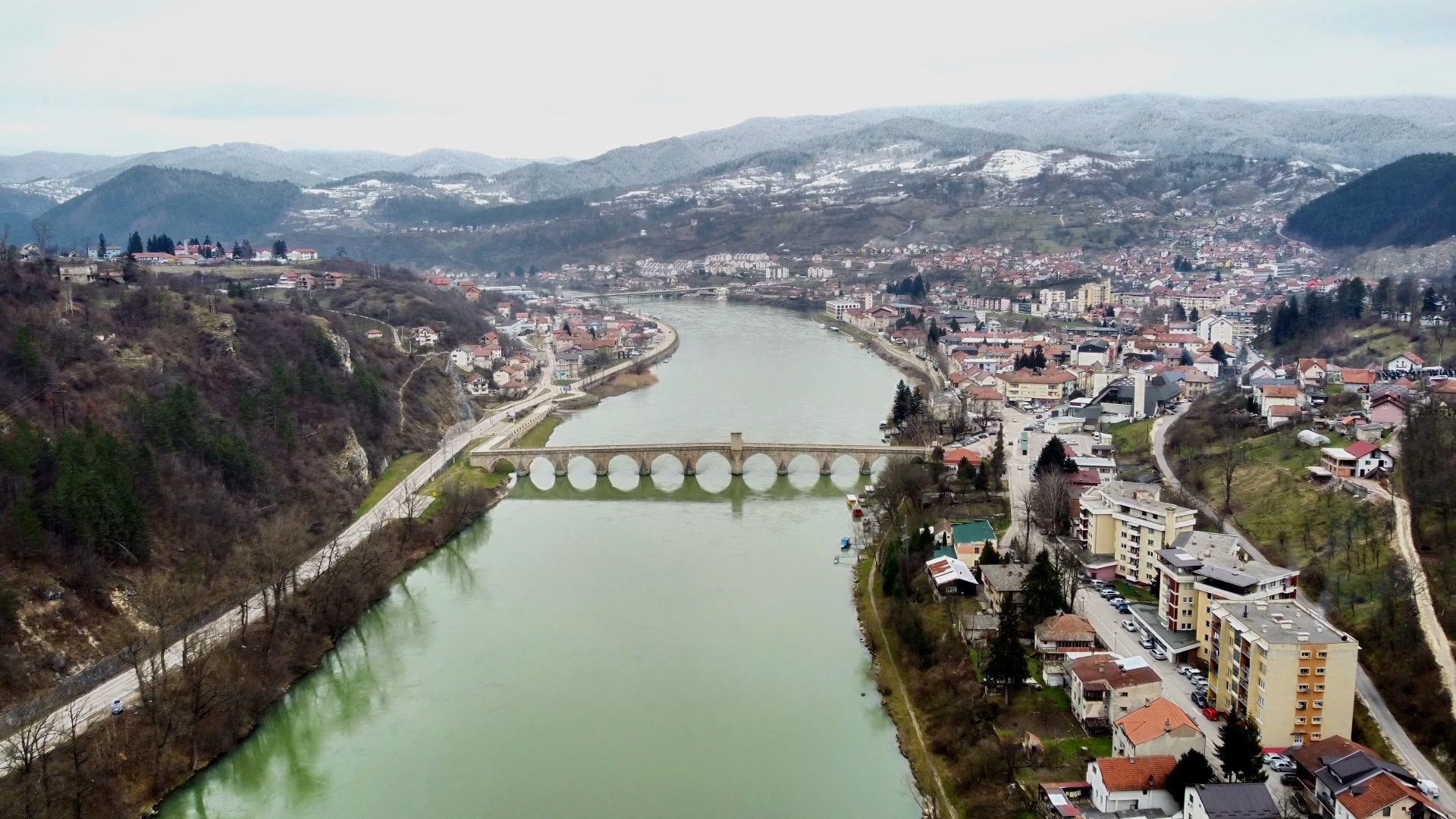play videoplay video
Video duration 01 minutes 30 seconds 01:30
The Soqallo Mehmed Pasha Bridge, which dates back to the Ottoman era in the city of Višegrad, eastern Bosnia and Herzegovina, is considered one of the most beautiful historical bridges that have survived to this day in the country.
This historical landmark is also known as the "Drina Bridge", and it was designed by the famous architect Sinan Agha, who excelled in designing many edifices throughout the lands ruled by the Ottoman Empire.
The bridge was built by order of the Ottoman Grand Vizier Sokolu Mehmed Pasha, over the Drina River between the years 1571 and 1577. When the bridge was built at that time, it represented great importance for the Ottoman Empire and neighboring regions, and it was a link between the East and the West.
447 years
The bridge has become one of the most important imprints left by the architect Sinan in the Balkan region, and this bridge with a niche is still standing, defying the elements of time, despite all the dangers that beset it.
The historic bridge, which still stands tall despite the passage of 477 years since its construction, gained additional international fame, thanks to the novel “Bridge on the Drina River” by Bosnian writer Ivo Andric, for which he won the Nobel Prize for Literature.
The bridge is 120 meters long, and includes 11 arches and a niche. It was subjected to major damage during World War II, and underwent careful restoration work between 1949 and 1960, as the damaged parts were repaired during the wars during that period when the country was part of Yugoslavia.
Two hydroelectric power plants, the first built in 1966 and the second in 1989 on the river, caused severe damage to the bridge's foundations.
Another restoration
Restoration work began again in 1992, after the water level rose at the bridge and it lost its aesthetics. However, these works stopped due to the war that the country witnessed between 1992 and 1995.
The bridge, which emerged unscathed from that war, was severely damaged by vehicular traffic that continued until 2003.
The bridge was listed on the World Cultural Heritage List by the United Nations Educational and Cultural Organization (UNESCO) in 2007.
In 2010, the Turkish Cooperation and Coordination Agency (TIKA) began implementing a restoration process to repair the damage to the bridge.
Through this project, which is one of the largest restoration projects implemented by TIKA in the Balkans, it has become possible to preserve this common cultural heritage in the country to be passed down to future generations.
Bosnia and Herzegovina is considered at the forefront of the countries in the Balkan region, in terms of its embrace of Ottoman archaeological monuments, as it succeeded in preserving many mosques, bridges, caravanserais, and baths, despite the many wars that the country witnessed.
Source: Al Jazeera + Anatolia

